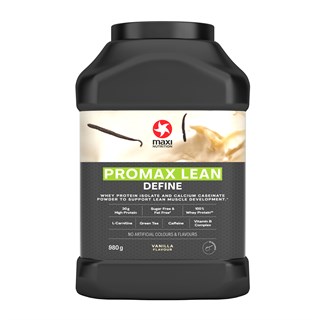Developing a Strong Core
Someone once told me that having a weak core is like having one polystyrene link in a chain. As soon as that chain is put under tension, that weak link will always be the one to go. A weak core will hinder your training and your ability to perform at your best at your sport or even your day to day job and life. Ever had back pain while sitting at work or standing in a queue? What if I told you that could be down to having a weak core?
You can have the strongest upper and lower body, but if your core is weak chances are you’ll get injured at some point, or hit a point where you can’t lift anymore. Improve it and see progression begin again.
These days there is a tendency to see the core as abs. A six pack and obliques. Simply an aesthetic element of the physique to go along with the pecs and delts. Well, the core is far more than that. Your core has to be able to transfer power from the legs to upper body. To be able to hold you up and support you against a weight or opponent. Want to be able to put a good hit in during a game of rugby? Want to be able to deliver a really powerful punch in MMA or want to be able to clean and press an impressive weight? Your core is the link between those powerful legs and that strong upper body, leave it to be weak and your hit, punch or press will be lacking.
Top 5 Tips:

1. Weighted plank
I see people doing the plank a lot. People know it is a good exercise. Yet they perform it with bodyweight, and you can tell it isn’t really a challenge. Add a weighted disc across the upper glutes/lower back. Hold the plank position as normal but now against a heavy weight forcing the hips down. Keep a straight line between the ankles, hips and shoulders and hold.
2. Work to failure
Like any other exercise in the gym, work the core to failure where you can. Take the weighted plank exercise above. Too often I see people performing the plank or other core exercises and stopping short of failure. It doesn’t look like they found it tough. Try a 15 or 20kg disc across a weighted plank and then use Tabata timings (20 second work, 10 second rest x 8 rounds) to work to failure again, and again, and again. If that isn’t hard enough, try working to failure (say 60 seconds) then taking half that as rest (30 seconds) then working to failure again. Use half that as rest and repeat. Try 5 rounds.
3. Take your time and do things properly
As for any exercise, taking your time usually has the most benefit, unless of course it’s an explosive exercise like a plyometric jump or a push press. However, for many other exercises, using a slower more controlled tempo is often far more beneficial. Let’s take a crunch for example. Instead of throwing the body up as quickly as possible with the arms then letting it fall to the floor under gravity, slow everything down and really ask the abs to work. Take the forearms behind the head and touch the shoulder blades with the finger tips, this will stop you throwing the arms forward to sit-up with momentum. Now suck the stomach in and exhale, this will pre-tense the abs. All this before even “lifting”. Now sit up as high as you can (probably lower than usual). Keep the abs sucked in and lower over a count of three. Breathe in, exhale and suck the stomach in and repeat.
4. Progress
To improve at anything you have to progress the challenge. Increase the difficultly of your workouts to force the body to adapt, this goes for core as well. For example, people ask me to teach them how to jump onto and squat stood on top of a swissball. I start with them sat up tall on the ball and ask them to straighten each leg separately without the hips moving. It might take them a week or two of practice to get this. Once they’ve nailed this, we raise one leg and one arm, again with hips staying solid. This may take another week. We then move onto keeling up on the ball (knees, hips, shoulder in line) but holding onto a bar or ledge with the arm. They release the bar for a few seconds at a time. Eventually they can release the bar for a minute or more. Then they don’t need a bar and can kneel on the ball in the centre of a room. Now we can add throwing and catching while kneeling on the ball. Only once they have complete control when kneeling on the ball do we start trying to stand on the ball, again while holding a bar or ledge. We progress this in a similar way to kneeling, before getting anywhere near squatting or jumping. This progression is paramount. There’s no point trying the really tough stuff if you haven't conditioned the body to the basics. Equally there’s little point in hammering the basics everyday if the body needs to progress to improve.
5. Exercise all areas
As alluded to above, people see the core as just the six pack. It’s not. It’s the rectus abdominis muscle (six pack) plus the transverse abdominus, the internal and external obliques, erectae spinae and more. To have a truly strong core you need to exercise the whole package. Some exercises like weighted plank will test all of the muscles but others like the crunch won’t. Therefore you need to add exercises like dorsal raises to work the lower back. Whether a sportsman or a bodybuilder, a balanced physique and balanced training programme is paramount to avoiding injury and being balanced. Only training the six pack abs muscles and negating the rest will only lead to back pain and an unbalanced, weak core.
The top 5 tips can be summarised as; challenge yourself with harder versions of exercises to ensure progression, work to failure when applicable, don’t forget the basics and exercise all muscle groups. Simple really.

















